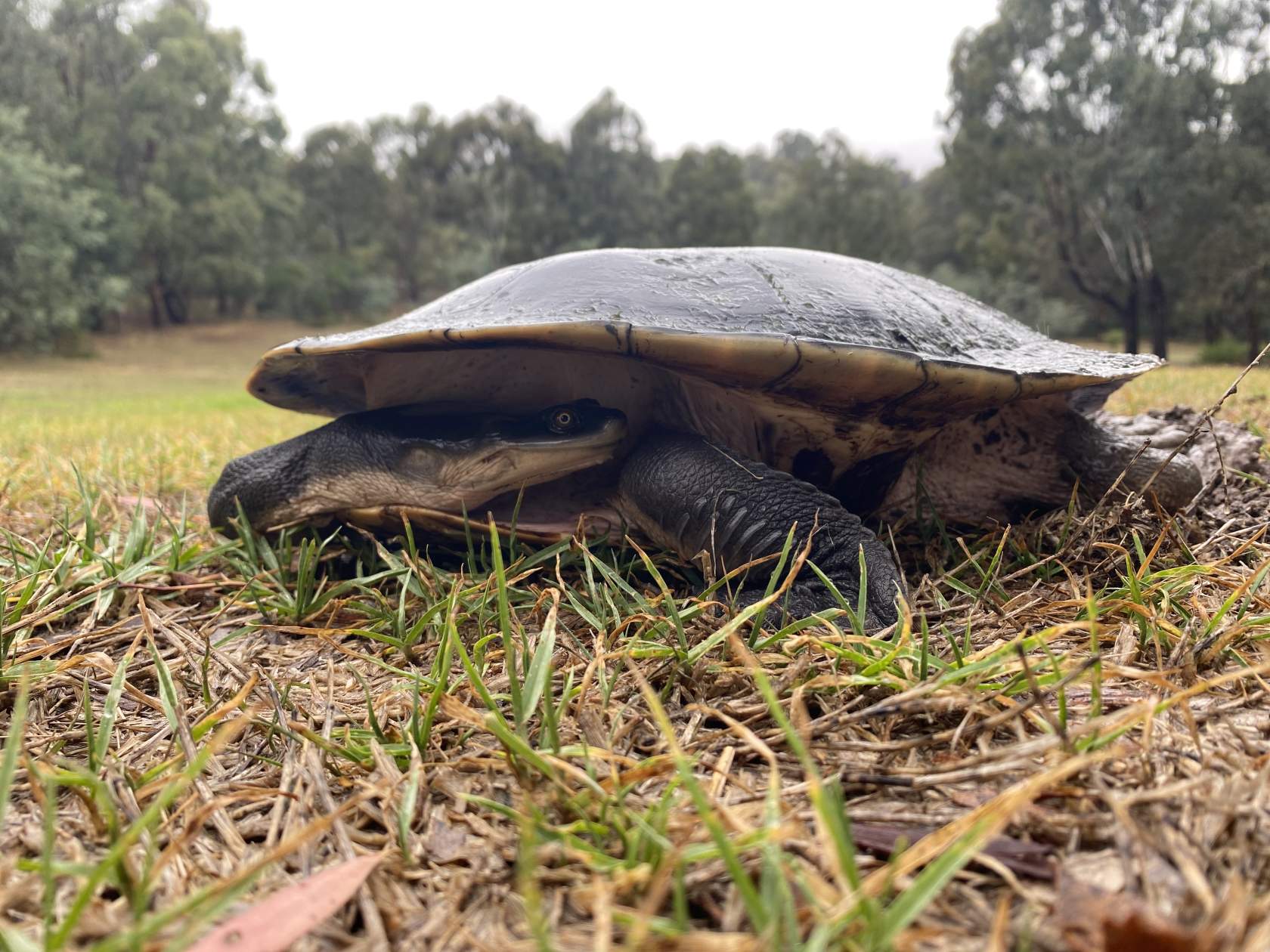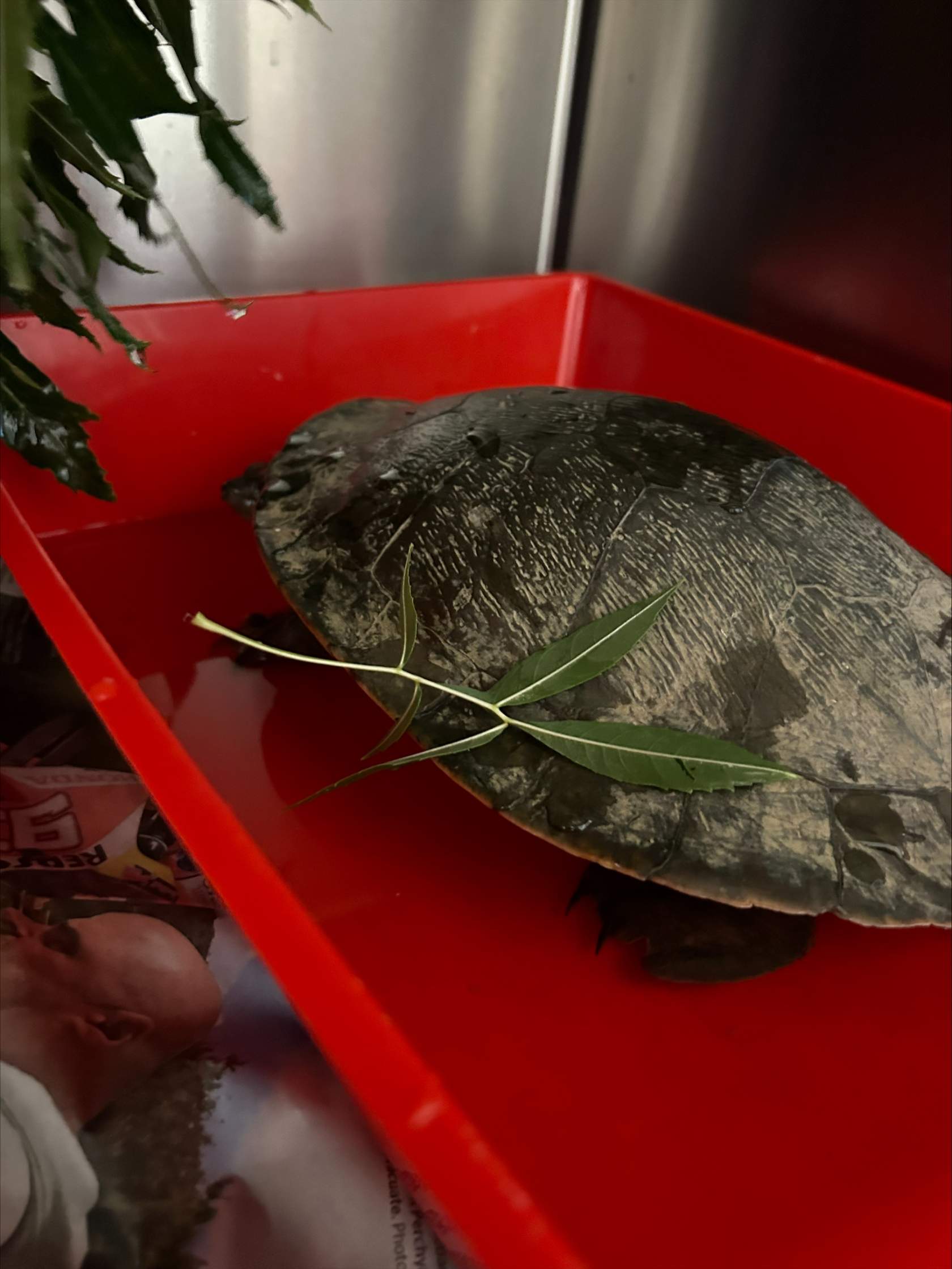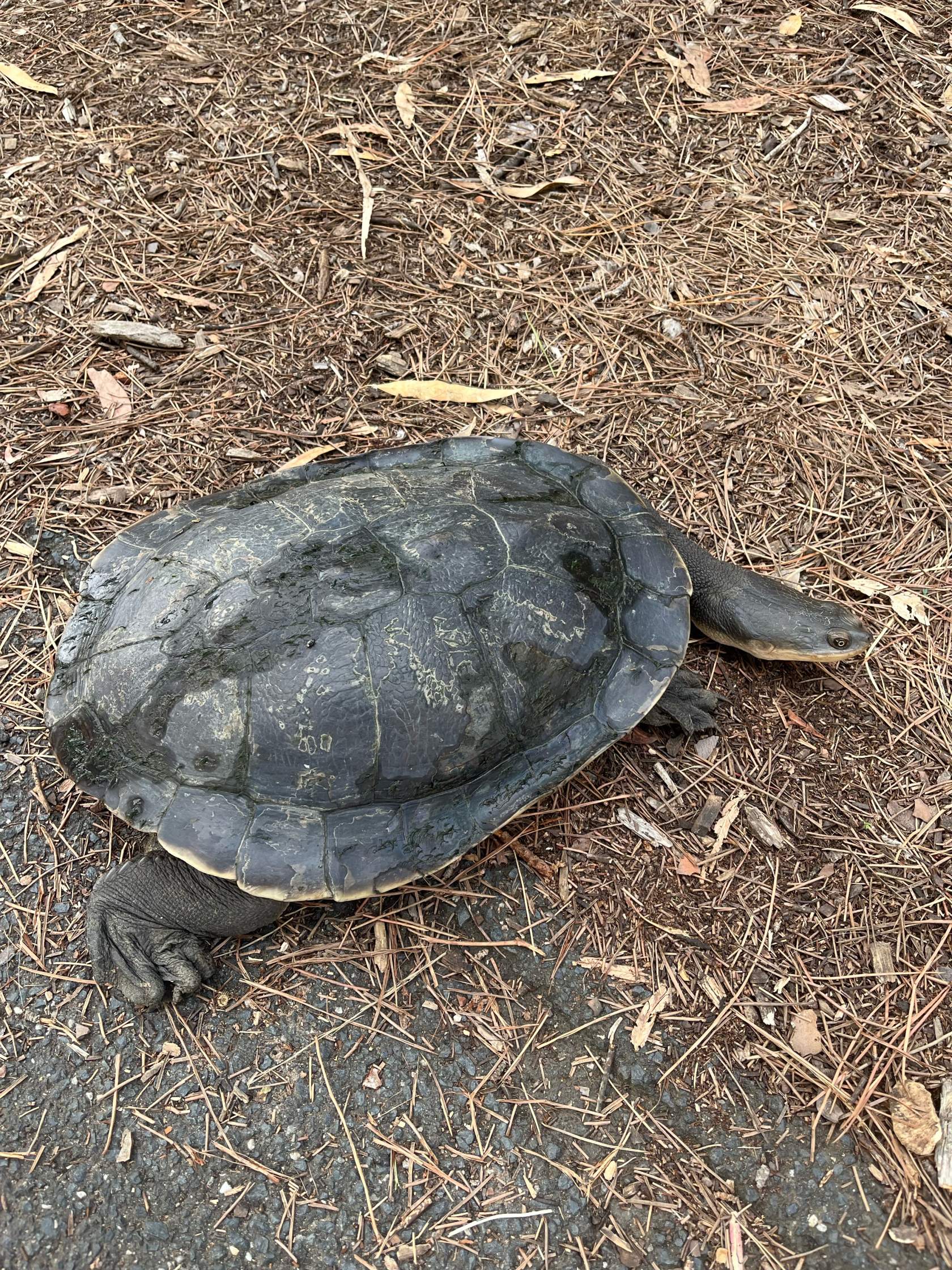
A threatened species in Victoria, the Broad-shelled turtle (Chelodina expansa), has the longest neck in relation to body size compared to any other turtle worldwide.
Appearance
They are much larger than the common long-necked turtle and can grow up to 50cm in length. They have a large, flattened head and small eyes. With a cream-coloured underside (plastron) and skin, they are recognisably different from the common long-necked turtles when turned upside down.
Distribution and habitat
These turtles can be found in slow moving or stagnant freshwater systems, ranging from the Murray Darling River System in South Australia up to South-Eastern Queensland. They frequent waterways with natural debris such as logs and root systems.
Diet
Their diet consists mainly of frogs, fish, crustaceans and occasionally ducklings. Similarly to the common long-necked turtles, they catch their prey using the strike and gape method.
Behaviour
Like other ectotherms (cold-blooded animals), they are most active during the warmer months. Although they rarely leave the water, dry weather may force them to travel to a new water source. Some choose to stay behind, burying themselves in mud to wait out the dry spell in a state called aestivation.
Breeding season
Commonly nesting about 100m away from the river, females lay between five and 30 eggs in autumn which hatch later in spring and summer. However, they can sometimes travel up to 1km from a river to lay their eggs.



General fun facts
What can you do to help?
The most common turtle reports made to Wildlife Victoria are when a turtle has been found wandering or displaced, or when they have been hit by a vehicle.
While the broad-shell and Murray River turtle will both predominantly stay in the water, long-necked turtles often spend time on land, and can actually spend up to six months out of water if required. What is often reported is when a turtle has been flushed down a gutter and into a drain system due to heavy rains or flooding. When found in a suburban or urban area, this can often lead to them being mistaken for a lost pet, when they are more commonly a wild turtle that has been displaced. If you see a turtle in an unusual place, please call our 24/7 Emergency Response Service on (03) 8400 7300 for advice.
A common call to Wildlife Victoria’s Emergency Response Service regarding turtles is when an animal has been hit by a vehicle. Turtles that have been hit by a vehicle are often left with a cracked or broken shell, which is equivalent to the pain from a broken bone. Therefore, it’s important they receive veterinary attention as soon as possible.
We hope that by increasing your understanding and awareness of our beautiful wildlife, you will feel empowered to manage wildlife situations confidently and in an informed, safe and appropriate manner. For support at any time, please call our 24/7 Emergency Response Service on (03) 8400 7300.
